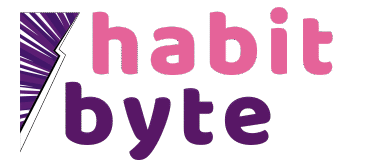10 Bite-Size Stress Management Habits for Nurses and Teachers
When your day moves from bell to bell or call light to call light, “just relax” isn’t realistic. Stress management for nurses and teachers needs to be fast, practical, and repeatable. These ten micro-habits fit into real shifts and school days, so you can reset your nervous system, protect your focus, and feel more in control, without adding more to your plate.
- 1) The 60-second micro-reset. Step into a doorway or pause at your desk, soften your gaze, and breathe in for 4 seconds, out for 6, five times. Dropping your shoulders and unclenching your jaw as you exhale helps the body signal “safe.” Use it before a tough conversation, between classes, or before entering a high-stress room.
- 2) Label and let go. Silently name what you feel, “rushed,” “overloaded,” “frustrated”, then add, “and I can take one step.” This quick acknowledgment calms brain chatter and nudges you back into choice. Pick the next smallest action (send one message, prep one med, cue one routine) and do only that.
- 3) Visual boundary cue. Place a sticky note or small icon where your eyes land most (monitor corner, desk edge, workstation). Every time you see it, drop your shoulders, relax your jaw, and take a slow exhale. Tiny posture resets reduce tension that accumulates unnoticed through the day.
- 4) The calm-and-boundary script. Take three slow breaths before responding, then use a clear “No, and…” to protect time without burning bridges. Scripts you can borrow:
- “I can’t do that now, and I can at 2:15 after meds/last period.”
- “I want to help. Here’s what I can do in the next 10 minutes.”
Practicing these lines once per day builds confidence and lowers cortisol around tough asks.
- 5) The parking-lot note. When a worry pops up mid-task, capture it on a “parking lot” list and schedule a review block. Tell yourself, “I won’t forget this, I’ll check it at 3:30.” Offloading loops frees up working memory so you can be present with patients or students.
- 6) Physiological sigh. Inhale through the nose, take a second quick sip of air, then slowly exhale through the mouth. Do 3–5 rounds before charting, calling a parent, or re-entering a noisy space. This pattern reduces immediate tension and is discreet enough to use anywhere.
- 7) Micro-stretch circuit. In ninety seconds: 30 seconds of shoulder rolls, 30 seconds of neck circles, 30 seconds of calf raises or wrist flexor stretch on a wall. Movement flushes stress hormones and boosts alertness without a full workout. Try it at the end of passing period or between room rounds.
- 8) Design your day: triage + batch communications. Sort tasks into A (safety/time-bound), B (important), C (nice-to-have). Do A’s first, batch B’s, and drop/delegate C’s. Then set 1–2 daily windows for messages (e.g., 11:40 and 3:20) and use a friendly auto-response: “I return messages at 11:40 or 3:20. If urgent, please call the main line.”
- 9) Classroom connection rituals (teachers). Use the 10-2-10 rule: 10 seconds to greet at the door, 2 minutes for the highest-need student, 10 seconds of appreciation at the end. Pair it with a quiet-start routine (posted bell work or reading) so you can breathe, scan the room, and set the tone. Connection reduces disruptions, and your stress, before it spikes.
- 10) Nursing flow anchors (nurses). Use a pre-rounding checklist to structure your workflow before each shift or patient round. Include key tasks like reviewing charts, prioritizing patient needs, and prepping medications or equipment. Pair this with brief micro-resets, take a deep breath, unclench shoulders, and center your attention, so you move efficiently while staying calm. Anchoring your workflow this way reduces chaos, prevents missed steps, and helps you maintain focus even during the busiest moments.
Bringing Stress Management Into Daily Practice
In high-pressure careers like nursing and teaching, small, repeatable habits make a big difference. By weaving quick resets, mindful pauses, and micro-actions into your day, you can reduce tension, stay focused, and maintain a sense of control even during the busiest shifts. Consistency matters more than perfection, practice these habits regularly, notice what works best for you, and let them become natural tools to support your wellbeing and resilience on the job.
